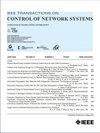考虑与出行者互动的拥挤道路上利润最大化的策略定价和路线
IF 5
3区 计算机科学
Q2 AUTOMATION & CONTROL SYSTEMS
引用次数: 0
摘要
我们介绍了一种创新的方法来分析交通网络中以按需移动(MoD)服务为特征的战略互动。本研究的重点是实现公司-旅行者均衡,即单个公司在考虑旅行者模式选择的同时优化定价和路线决策,以实现盈利最大化,并通过多项logit模型(MNL)建模。尽管利润最大化问题已经在各个领域的收益管理领域得到了广泛的研究,但它们在交通网络中的应用带来了独特的挑战,例如网络拓扑的影响和额外的约束(例如,流量守恒,再平衡等)。为了解决由内生出行需求引起的内在非线性关系,我们将域空间从价格转移到市场份额。随后,我们在MNL中使用直接的一对一对应来推导价格。这项工作是在交通网络分析背景下利用这种新技术的第一次努力。值得注意的是,提出的重新表述结果是一个等效的问题,显示出凸性,提供计算效率和可解释性。通过求解Karush-Kuhn-Tucker条件,我们用广义路线成本来描述用户均衡,其中包含了再平衡的运营成本和拥堵引起的旅客负效用。通过对广泛认可的苏福尔斯网络进行的数值分析,我们的方法得到了经验验证。结果强调了我们的方法在分析具有MoD服务的交通网络方面的有效性和实用性,并为未来的重要研究奠定了基础。本文章由计算机程序翻译,如有差异,请以英文原文为准。
Strategic Pricing and Routing to Maximize Profit in Congested Roads Considering Interactions With Travelers
We introduce an innovative approach for analyzing strategic interactions in transportation networks featuring mobility-on-demand (MoD) services. This study focuses on achieving company–traveler equilibria, whereby a single company optimizes pricing and routing decisions to maximize profitability while considering travelers' mode choices, modeled via a multinomial logit model (MNL). Although profit maximization problems have been extensively studied in the field of revenue management across various domains, their application to transportation networks poses unique challenges, such as the influence of network topology and additional constraints (e.g., flow conservation, rebalancing, etc.). To address the inherent nonlinear relationship arising from endogenous travel demand, we shift our domain space from price to market share. Subsequently, we derive prices using a direct one-to-one correspondence within the MNL. This work is the first effort in leveraging such novel techniques in the context of transportation network analysis. Remarkably, the proposed reformulation results in an equivalent problem exhibiting convexity, offering computational efficiency and interpretability. By solving the Karush–Kuhn–Tucker conditions, we characterize user equilibrium with the generalized route cost, which incorporates the operating cost by rebalancing and travelers' disutility caused by congestion. Our approach is empirically validated through a numerical analysis conducted on the widely recognized Sioux Falls network. The results underscore the effectiveness and practical applicability of our method in analyzing transportation networks featuring MoD services and open the stage for important future investigations.
求助全文
通过发布文献求助,成功后即可免费获取论文全文。
去求助
来源期刊

IEEE Transactions on Control of Network Systems
Mathematics-Control and Optimization
CiteScore
7.80
自引率
7.10%
发文量
169
期刊介绍:
The IEEE Transactions on Control of Network Systems is committed to the timely publication of high-impact papers at the intersection of control systems and network science. In particular, the journal addresses research on the analysis, design and implementation of networked control systems, as well as control over networks. Relevant work includes the full spectrum from basic research on control systems to the design of engineering solutions for automatic control of, and over, networks. The topics covered by this journal include: Coordinated control and estimation over networks, Control and computation over sensor networks, Control under communication constraints, Control and performance analysis issues that arise in the dynamics of networks used in application areas such as communications, computers, transportation, manufacturing, Web ranking and aggregation, social networks, biology, power systems, economics, Synchronization of activities across a controlled network, Stability analysis of controlled networks, Analysis of networks as hybrid dynamical systems.
 求助内容:
求助内容: 应助结果提醒方式:
应助结果提醒方式:


